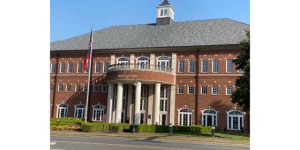The Town Crier: Mascot Stove of Dalton
Published 8:00 am Sunday, March 9, 2025
Last time, thanks to a series of biographies of citizens of note from Whitfield County and Dalton, published in 1917 in “A Standard History of Georgia and Georgians” (volume 4) by Lucian Lamar Knight, we got to meet a citizen of note from back at the turn of the last century named George Glenn. This week we’ll meet another such citizen, and no, his name is not Mascot Stove. That’s the name of his successful company he had here in Dalton.
The founder of that foundry was named James F. James. Like all the biographies in this history, the author goes back a generation or two to let us know the lineage of the person and to discover how they ended up in Dalton. The ancestors are made to shine just about as brightly as the person featured.
For James F. James, the grandparents’ story begins in Dickson County, Tennessee, northwest of Nashville. The county is known these days for having the oldest county courthouse still in use, dating from the 1830s.
Trending
James F.’s parents were Thomas Jefferson James and Nancy Jane Hudson, both from that county and both from early pioneer families to Tennessee.
James F. was born on April 30, 1877. At the age of 4 his parents moved to Texas but only for three years when they then moved to Fulton County, Kentucky, to farm. Fulton County is the westernmost county in Kentucky with its western border being the Mississippi River.
James F. James studied in public school there and then attended college at Southern Normal University, where he worked his way through the classes by being a janitor and in the laundry. Having graduated in 1899, he moved to South Pittsburg, Tennessee, to work for his uncle Robert Hudson, who was supervisor of the metal foundry there. This move changed the trajectory of his life.
He started there as a clerk at the pay rate of $50 per month. As soon as he discovered that the foundry molders made $25 to $30 a week, he quickly changed directions. He became an apprentice at this skill and simultaneously took correspondence classes from the International Correspondence School based in Scranton, Pennsylvania. This was the early 1900s version of taking classes online.
Once he had mastered being a molder in the metal trade and graduated from Correspondence School in 1905, he moved to Chattanooga with his bride Effie Alice Deakins, a Tennessee girl he had married in 1901. She was the granddaughter of Jonathan Tipton, the governor of Tennessee during the War of 1812.
James started working at the Chattanooga Roofing and Foundry Co., the largest in Tennessee at the time. His combination of technical and managerial skill led him to be promoted to the supervisor of the foundry. He had progressed to the same position his uncle held when he started in the industry.
Trending
James continued improving himself with further classes, this time working toward mastering mechanical engineering and learning the art of drafting. One thing that was of benefit to him his entire career was that as he learned through classes and books he could immediately get a feel for their actual applications in the real world since he was working in the industry as he studied.
He had an innate knack for the industry and the work at hand and proved himself not just a worker or manager, but would soon become an inventor. With his knowledge of the Chattanooga company where he worked, familiar with the work on the floor as well as the business of the offices, he became head of the sales force for a year. Then, in 1912, he made a leap, landing fortuitously in Dalton.
He moved to Dalton in November of 1912 and by December had his own company, the Mascot Stove Manufacturing Co. He was president and treasurer of the company that was incorporated with a founding value of $20,000. Most of the investors were from Whitfield County, with many of the well-known businessmen partners in other ongoing Dalton business success stories as well. Mascot soon became a major company not just for Dalton, but for the whole state.
Important to note in regards to the success of the Mascot Stove company was the fact that James F. James was the holder of four patents for various parts of his stoves. They included a detachable grate that fit in multiple positions, a “Titelock sad iron” (I have no idea what that is, but it’s a good thing!) and the biggest innovation, an almost complete redesign of how the range heats.
James called his stove the “Kitchen Kumfort.” Through a unique design of dampers and flues, the range could heat faster and distribute the heat more evenly by redirecting the heat around the inside of the stove, keeping the kitchen cooler (i.e., more “kumfortable”) for the cook. It also used less fuel, a great selling point if you were the one having to go outside on cold winter days and chop kindling.
Adding to his design strengths were his sales strengths. Mascot sold directly to the retailer, cutting out the wholesaler, aka the middle man, and they made sure that all models and all parts needed were always stocked for sales, replacements and repairs.
During World War I, Mascot also made dummy practice hand grenades for the U.S. army.
James Franklin James was such a success that he was featured in International Correspondence School advertisements in the early 1920s. He sold Mascot around 1927 after a union strike. Mascot moved to Chattanooga, made toy stoves as well, evidently went bankrupt in 1933, was sold at auction, and then rebought by the original stockholders. Mascot survived until perhaps the 1940s, as wood burning stoves went the way of the buggy whip. Legendary Dalton entrepreneur James F. James lived until 1948.
Mark Hannah is a Dalton native who works in the film and video industry.






